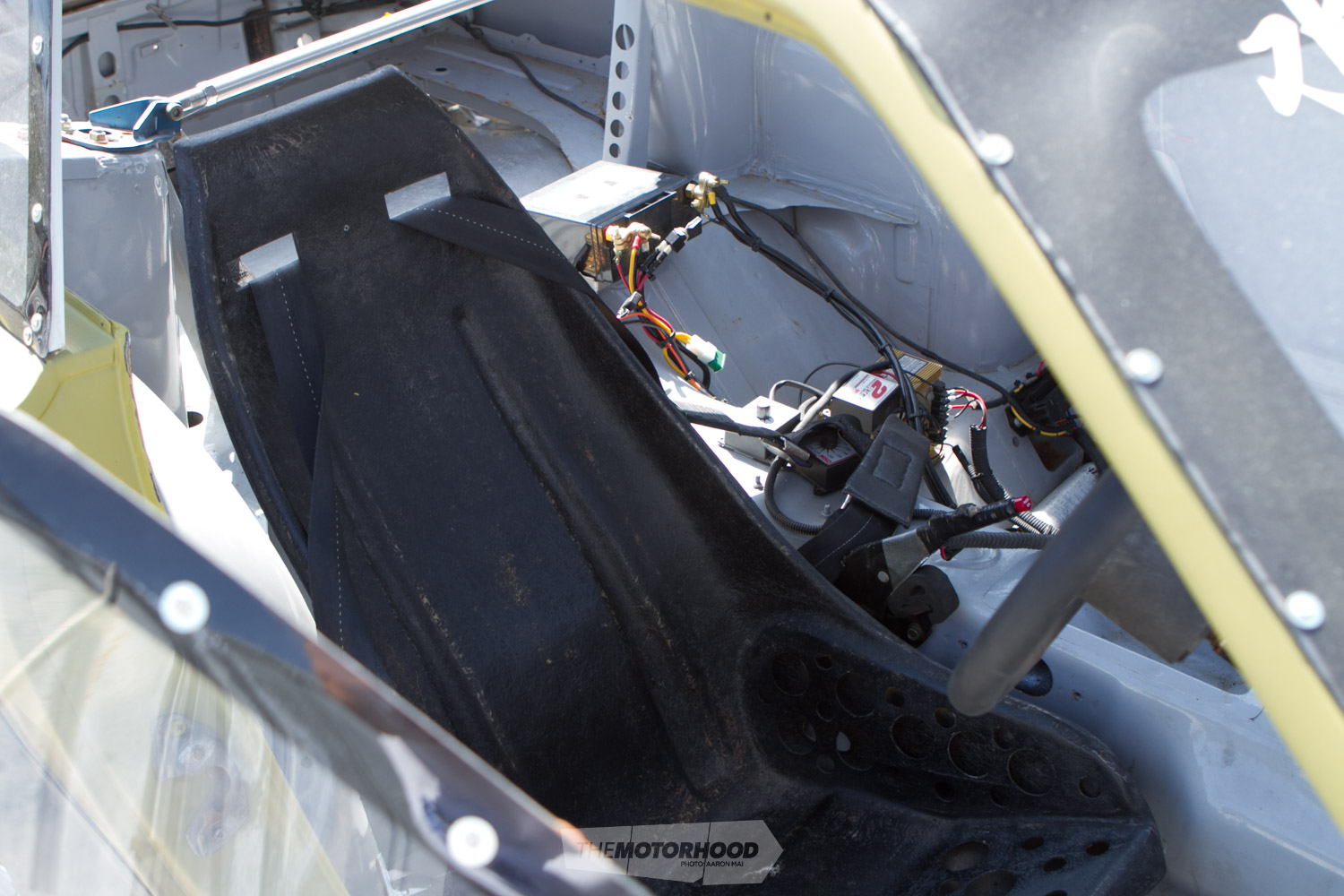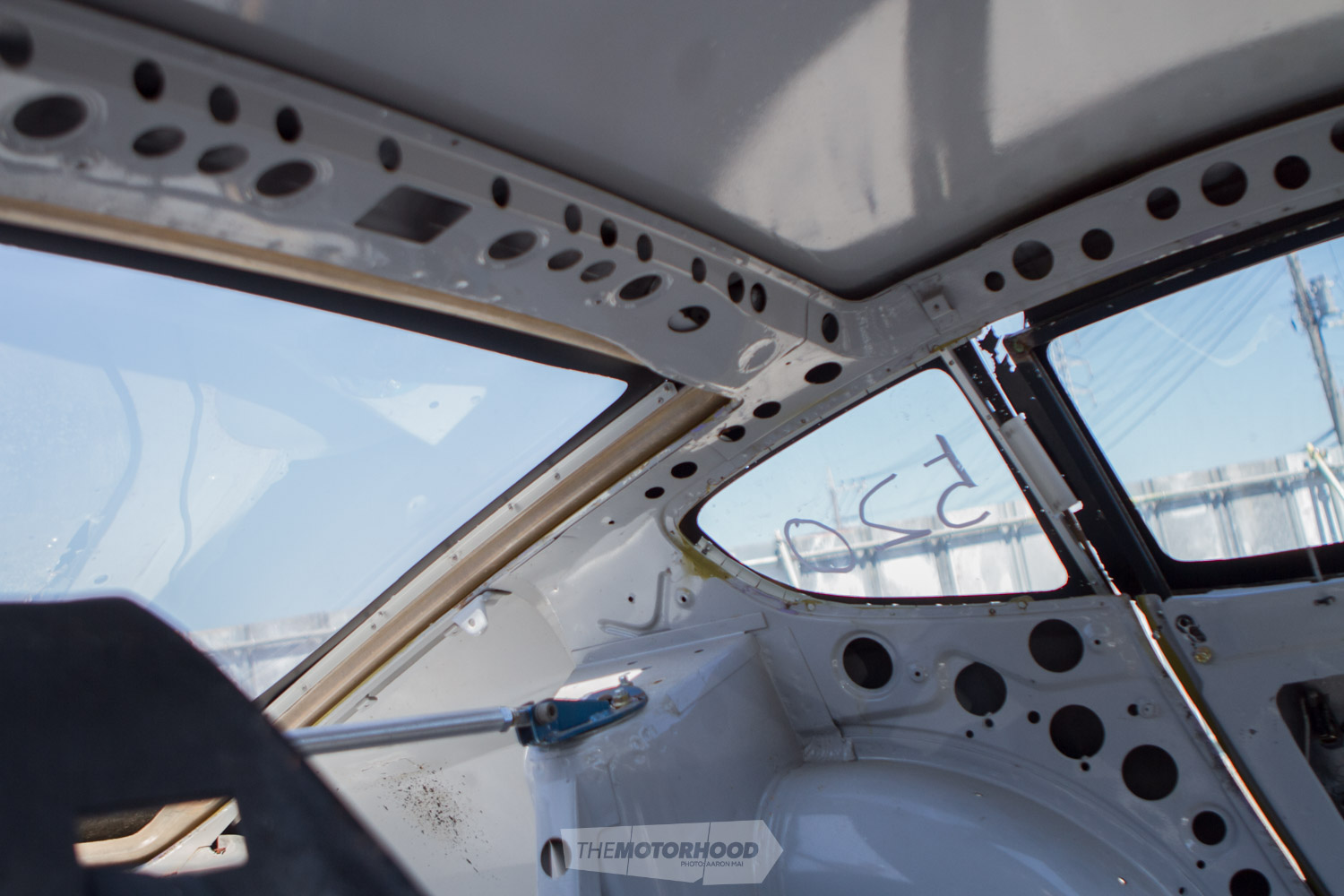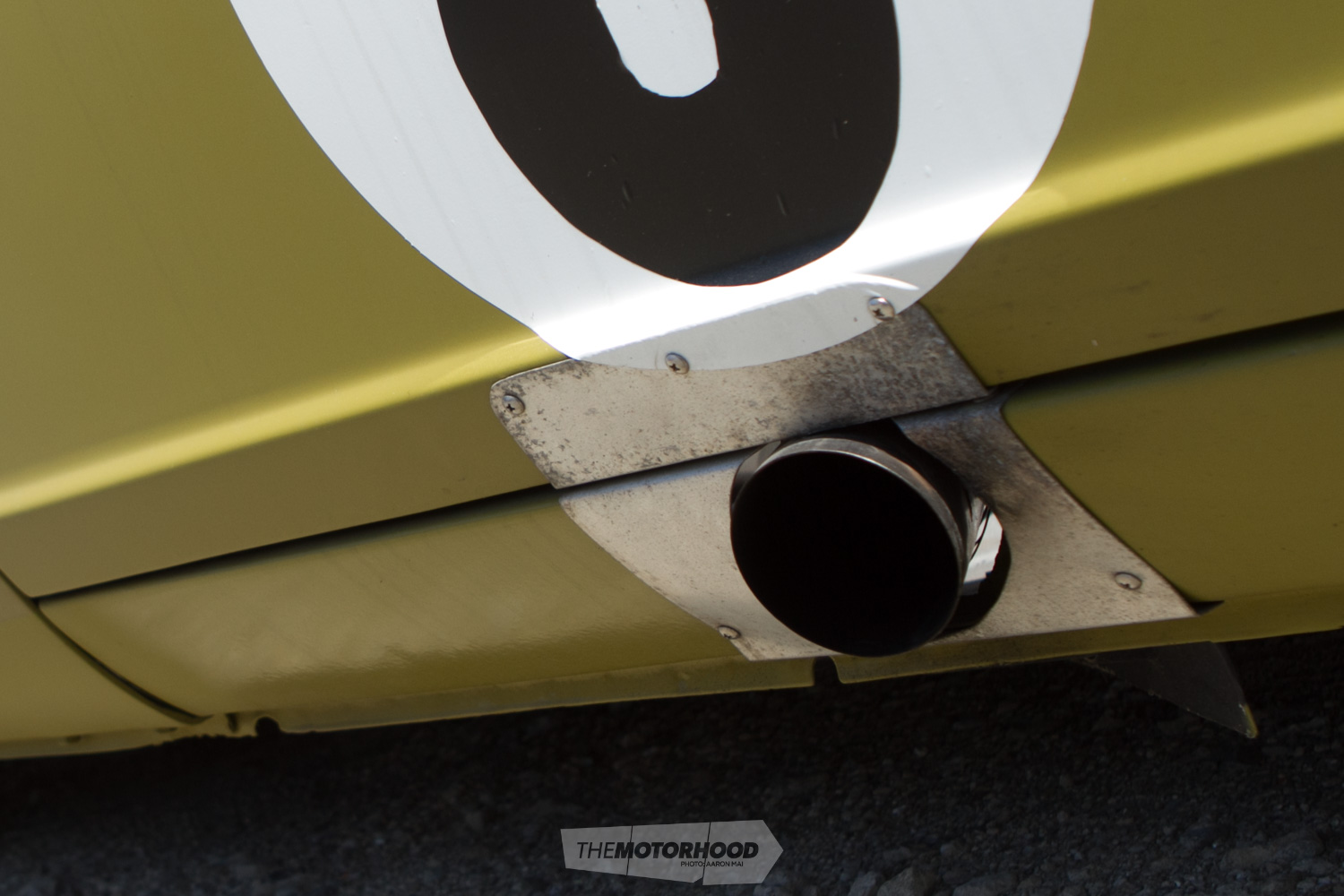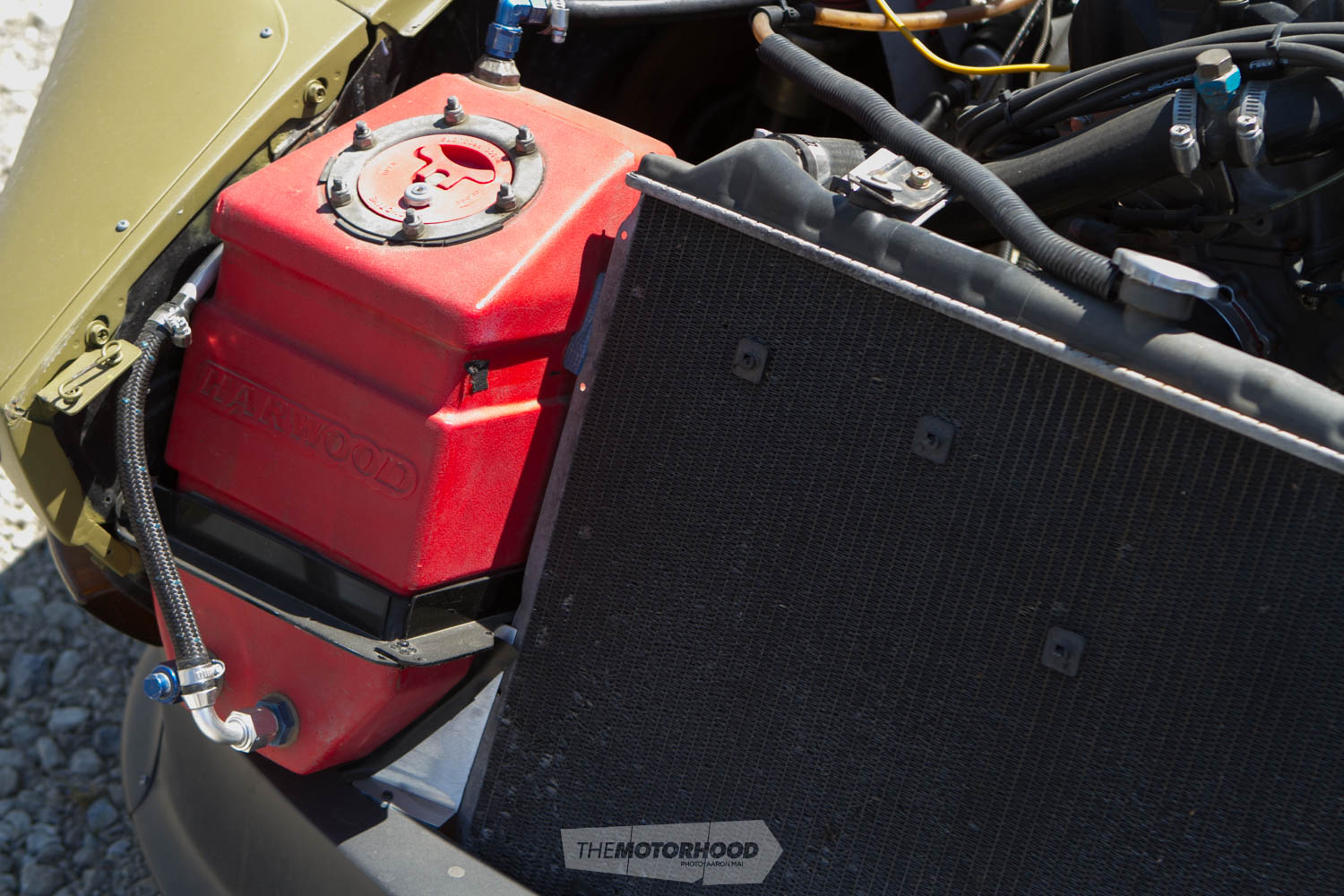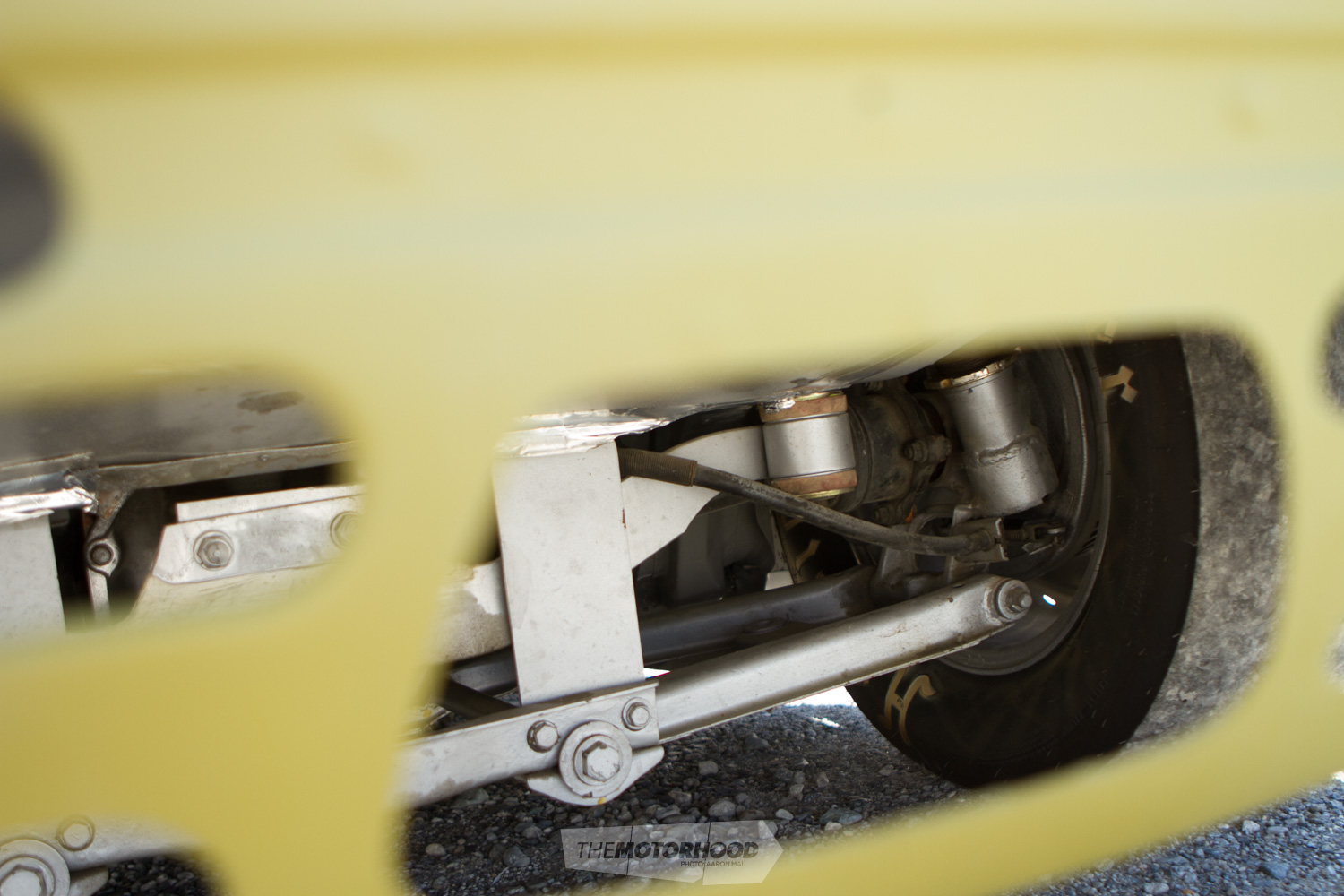Think Muzuno Works is all about shakotan? Well, think again …
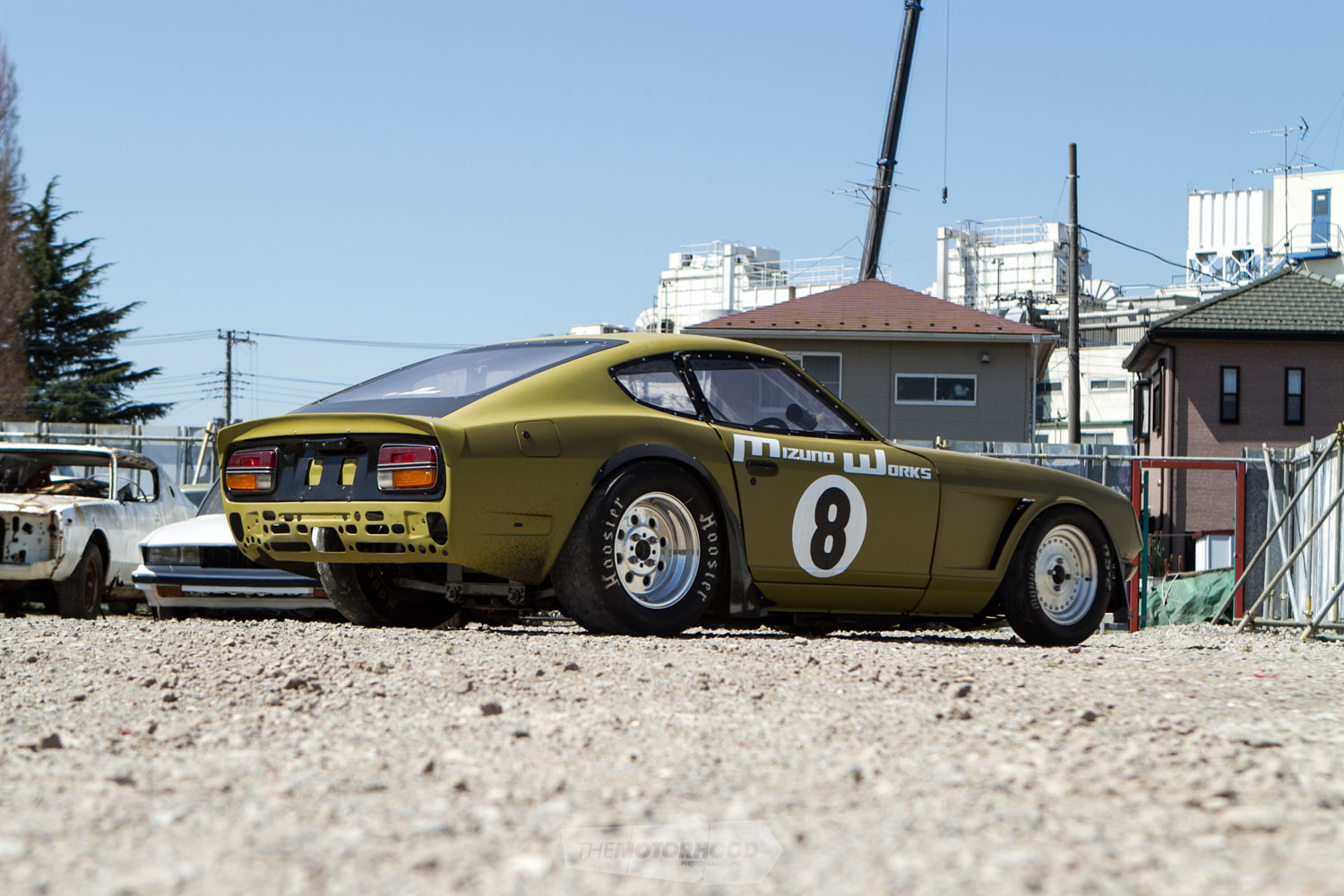
The drag racing scene in Japan was white hot from the mid 1980s to the end of the ’90s. The drivers were brave, and many of the machines they built are now the stuff of legend. During this time, the tuning scene was all about big power, drag racing, and 0–300kph trials. However, evolution within the scene saw many tuners cross over into time attack and drifting, while zeroyon, which refers to drag racing in Japan (with the word meaning ‘zero to four’, or ‘0–400m’) slowly saw only diehard fans come out to play. This really meant drag racing had its back up against the wall, but, despite this, a small group of dedicated racers is unwilling to let the sport grind to a halt and is working on that goal in spectacular fashion.
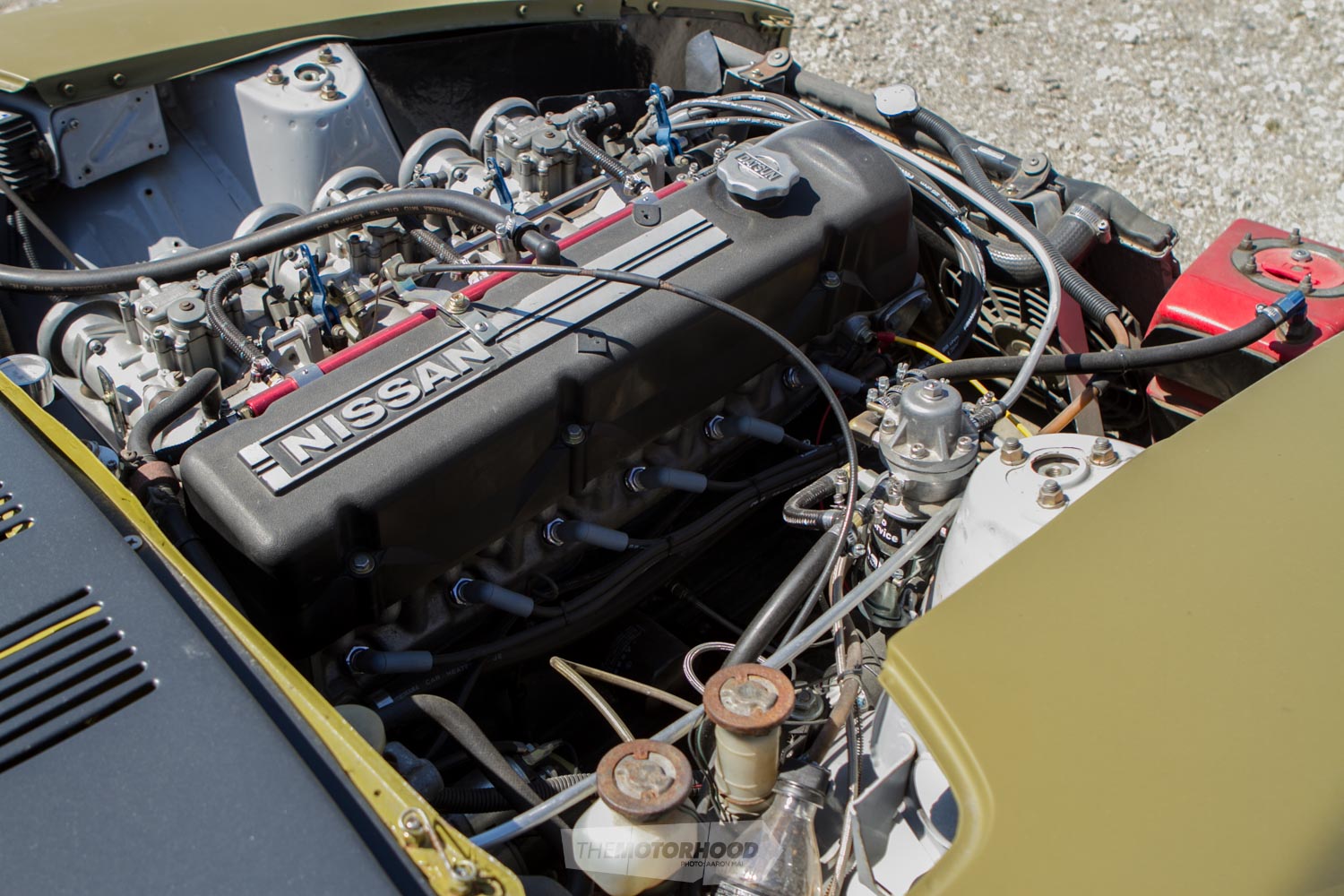
The most endearing thing about this car is that it is a serious piece of kit, but it didn’t require a bank robbery to build it
Surprisingly, one of these dedicated racers is Shintaro Mizuno, a man more commonly known to readers for his shakotan creations, but, when we visit his workshop, something a little different catches our eye. Nestled alongside the workshop sits an S30 drag car powered by an L-series engine — not exactly what many would consider a mainstream drag weapon.
Unlike other motorsport disciplines in Japan, which enjoy an abundance of tracks, drag racers there only have two options. The first and most popular is Sendai Hi-Land drag strip, which sends cars slightly downhill towards the top end, before they snake through a very slight left kink in the track. Add into the mix a bit of undulation, and you get some proper seat-of-your-pants racing. The second strip of tarmac is found at Central Circuit, northwest of Osaka, where drivers use the front straight of the circuit to lay down times, and plenty of rubber.
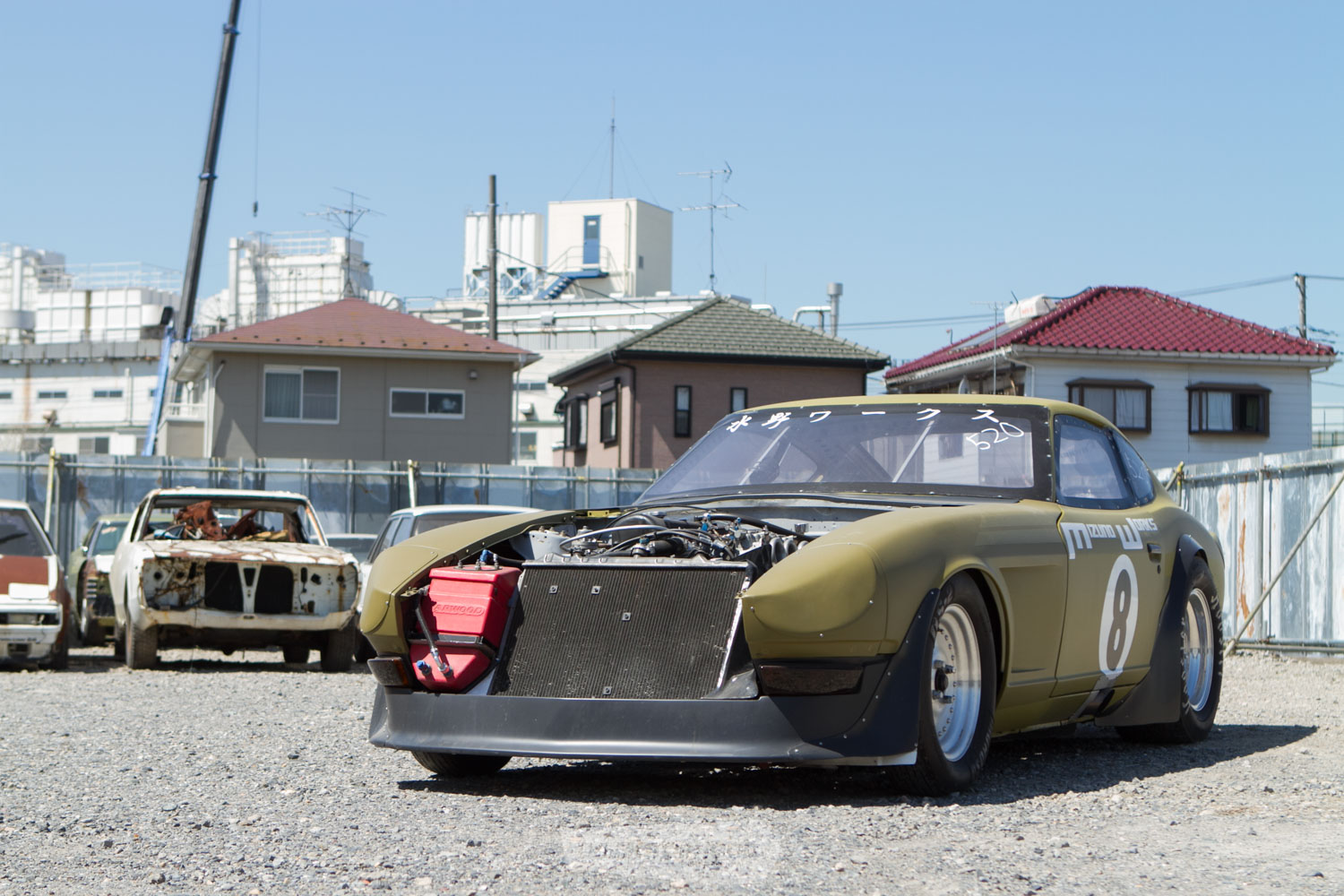
Both venues have produced some memorable passes, and have been the testing ground for cars such as Mizuno-san’s S30. Some might remember this car as a purple Tokyo Auto Salon show car back in 2008. Clearly, it’s no longer a show pony, and it’s been given the true Mizuno Works treatment to make sure it hooks up, goes straight, and flies down the strip.
The transfer of raw power through to the rear comes courtesy of a Nissan S14 71C gearbox, with a Kameari cross mission gear set. The gaps from first gear through third are short, while fourth onwards use standard ratios
Mizuno-san has some of the most talented fabricating hands in the industry, and what endears you to this car is the fact that is has been built in his workshop without a mail-order train of shiny parts from a catalogue. Everything on this S30 is old school, wild, and built for pure purpose.
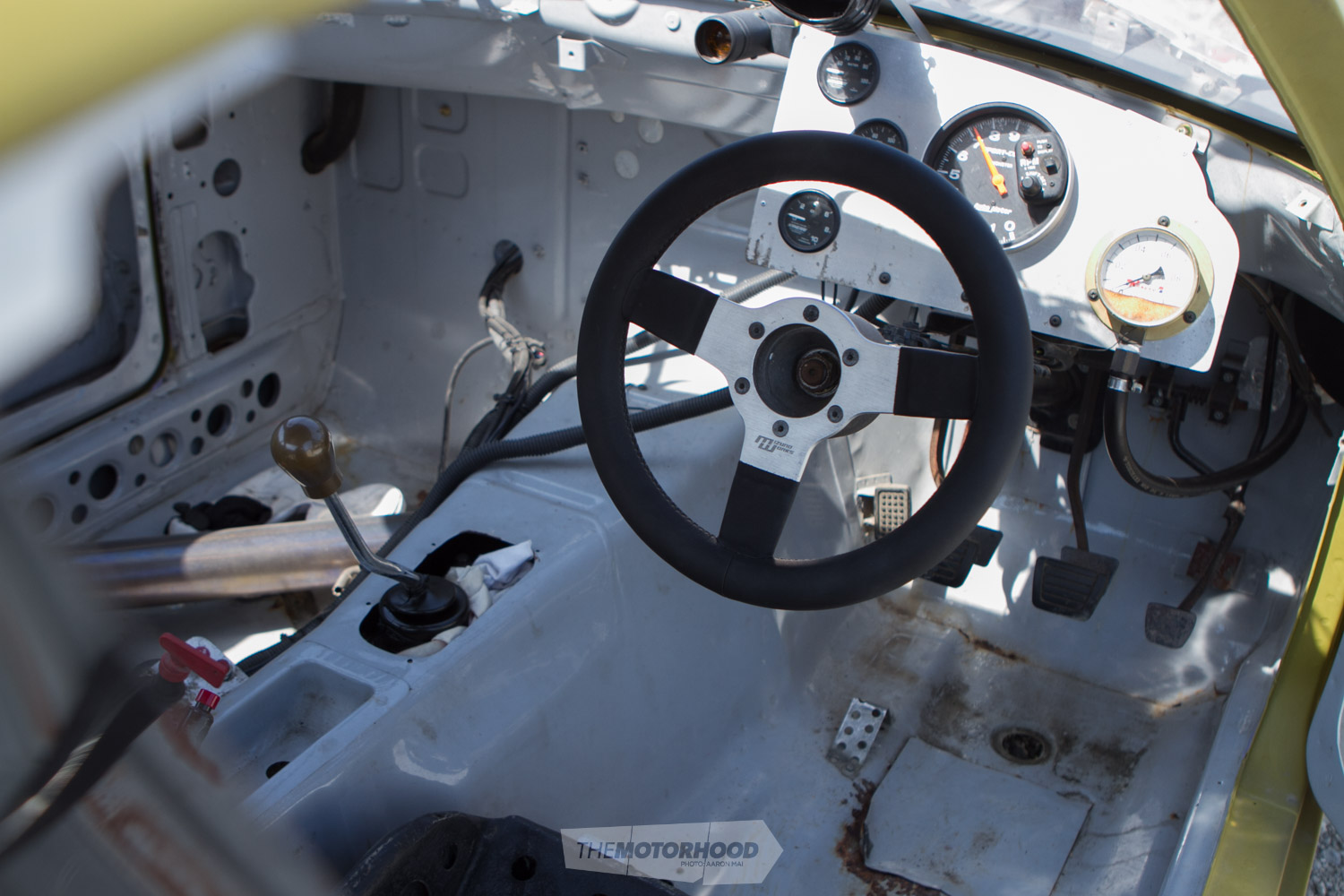
As Mizuno-san fires the car into life, the L-series engine produces a lumpy howl that perfectly matches the personality of the S30. What the Japanese drag scene lacks in numbers, it certainly makes up for in terms of character-infused cars. The angry-sounding L-series has been stroked to 3100cc capacity using 89mm pistons, Watanabe H-beam connecting rods, and an LD crank. The head also received extensive work, including bumping the compression by removing 38cc from each chamber. The valves are Kameari L-type lightweight big valves, the cam a WAKO 74S, and the springs are Isky. Nestled right up front of the engine bay sits the fuel cell, complete with a short pickup to the fuel rail. Mizuno-san grins, and calls it an “added incentive to keep the car straight and off the walls” when slamming gears off the green light. Oh, and as the car produces 270kW, would you expect anything other than triple 50mm Solex carbs to feed a proper vintage racer like this?
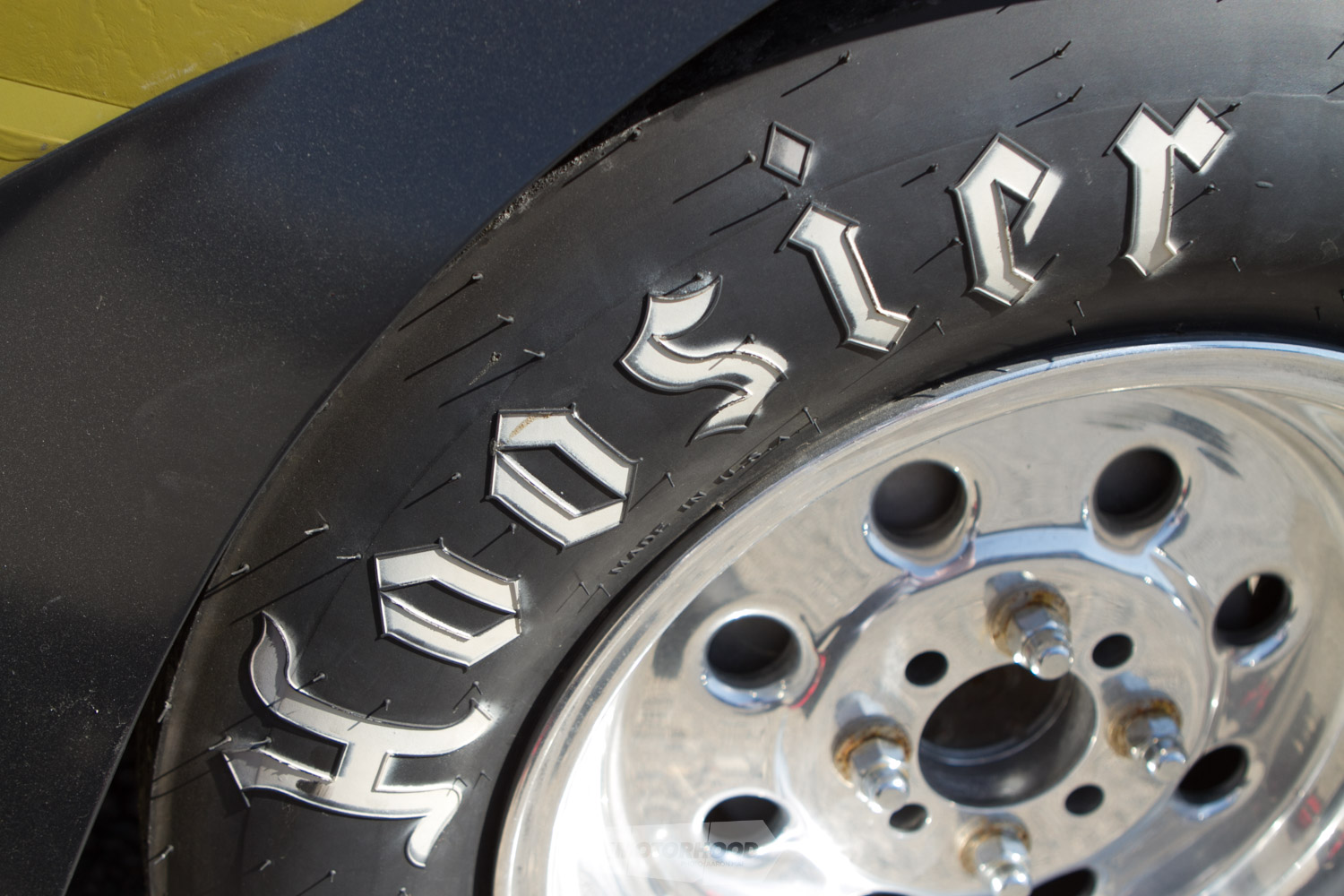
The car uses Weld Draglites wrapped in 26×10-15 sticky Hoosier rubber at the rear, while up front there’s a set of handcrafted wheels with Moroso 24×5-15s. “I’m not sure where I got the front wheels, but they were there, and do the job,” he says
The car’s old-school handcrafted nature is especially evident when you crack the driver door and peer into the cockpit. The first thing that strikes you is how raw the car is; there’s no frills and no bulls**t — racing is what this is all about. As the king of old school, Mizuno-san runs the car without a cage, and has taken lightness to the extreme, with speed holes throughout the interior.
Looking at the roofline, you might notice that it is a wee bit off. “I chopped the top by 3cm to improve the lines and aero,” he says, and it also helped get the wet weight of the car down to 800kg. The driver seat is an old-school plastic unbranded one that Mizuno-san came across, and just like the front wheels — “It does the job.” A classic Schroth four-point harness laced through the seat — which is mounted further back for better weight distribution —keeps him firmly in place. On the seat placement, he says: “Ah, that was not intentionally done; the S14 box was 6cm longer, so, because of my size, we shifted the seat back, but it worked out great.”
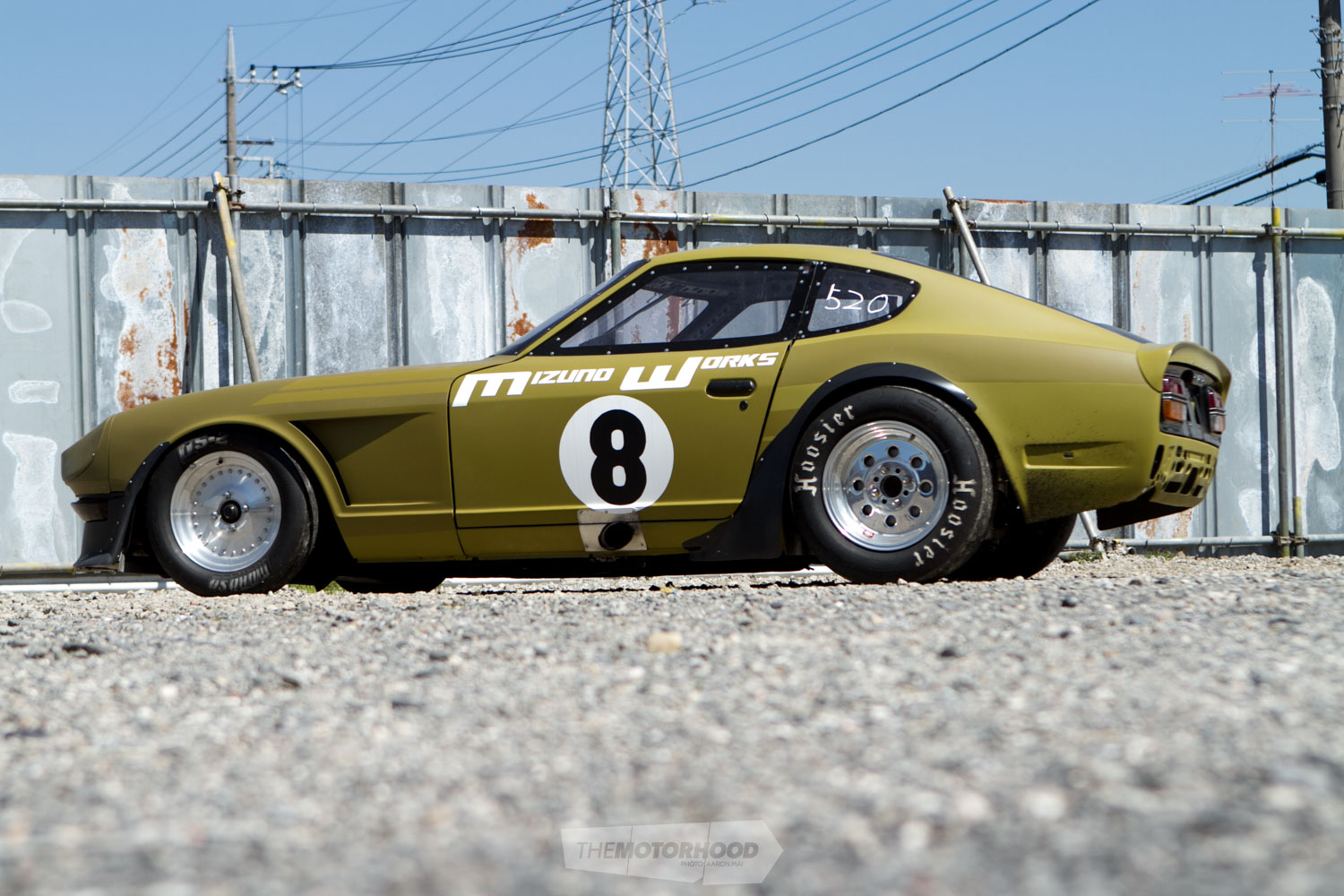
Sitting beside the driver, there’s an MSD 7AL ignition with two-step, and, in front, sits the bare minimum of gauges, with four Kameari items for oil and water, a shift light, and an Auto Meter tacho — not that Mizuno-san has a lot of time to check the numbers while he’s running downhill into the kink.
Since 2011, the car hasn’t had the amount of development Mizuno-san would like, as Sendai Highlands was closed for two years due to quake damage. “When I ran at Sendai before the quake struck, I put down a time of 11.47 for 0–400m,” he recalls, noting that the car still has lots of potential — and more kinks that he would like to iron out while remaining confident of a low 10-second pass. All things in good time, he tells us, as this isn’t a car that is out chasing records; rather, it’s an outlet for the passion that seethes through his veins.
In a world of changing trends and fads, to have a core group of the original pioneers still racing like they always have is a privilege. We all love to remember the good old days; well, guess what? They have some fight left in them yet.
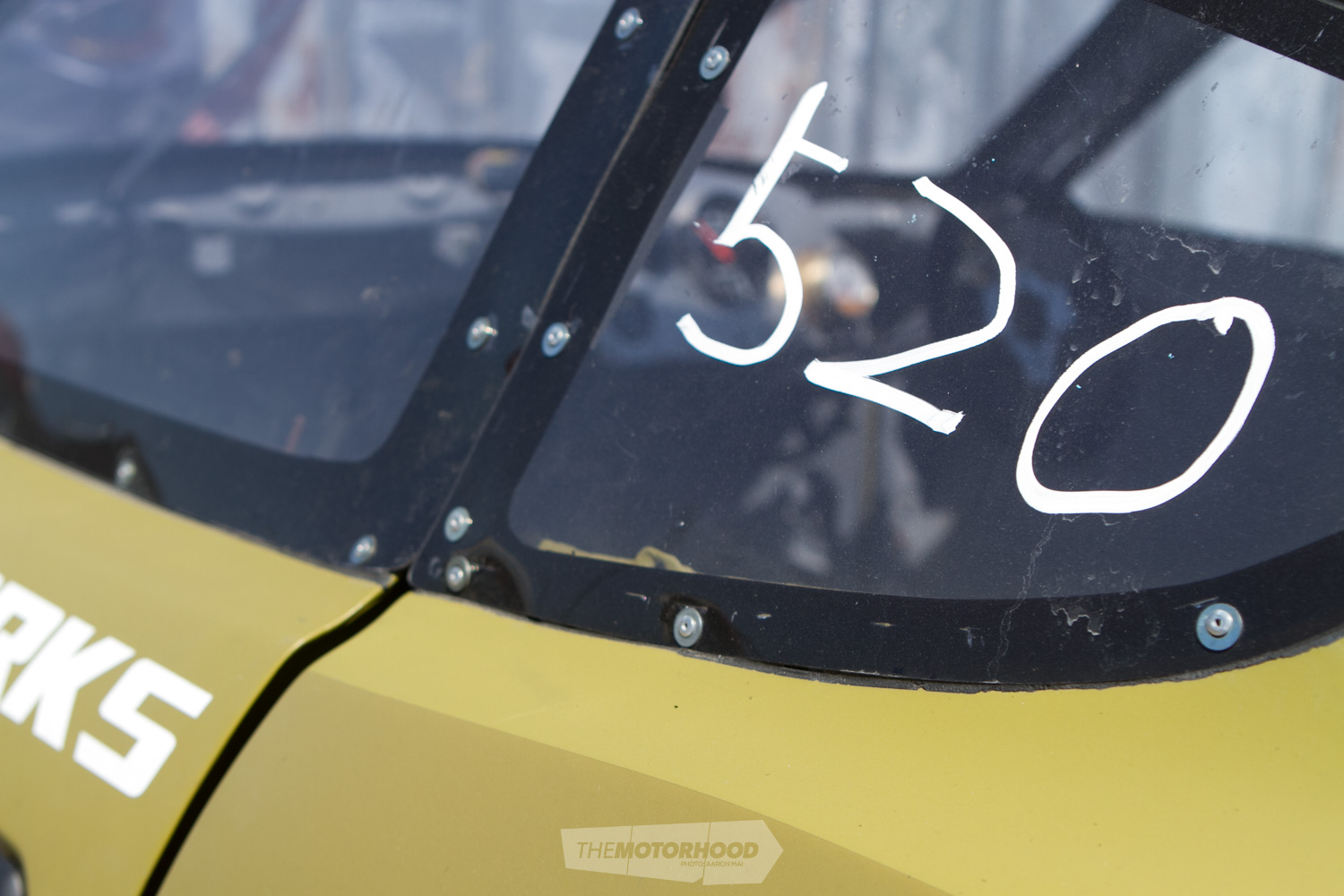
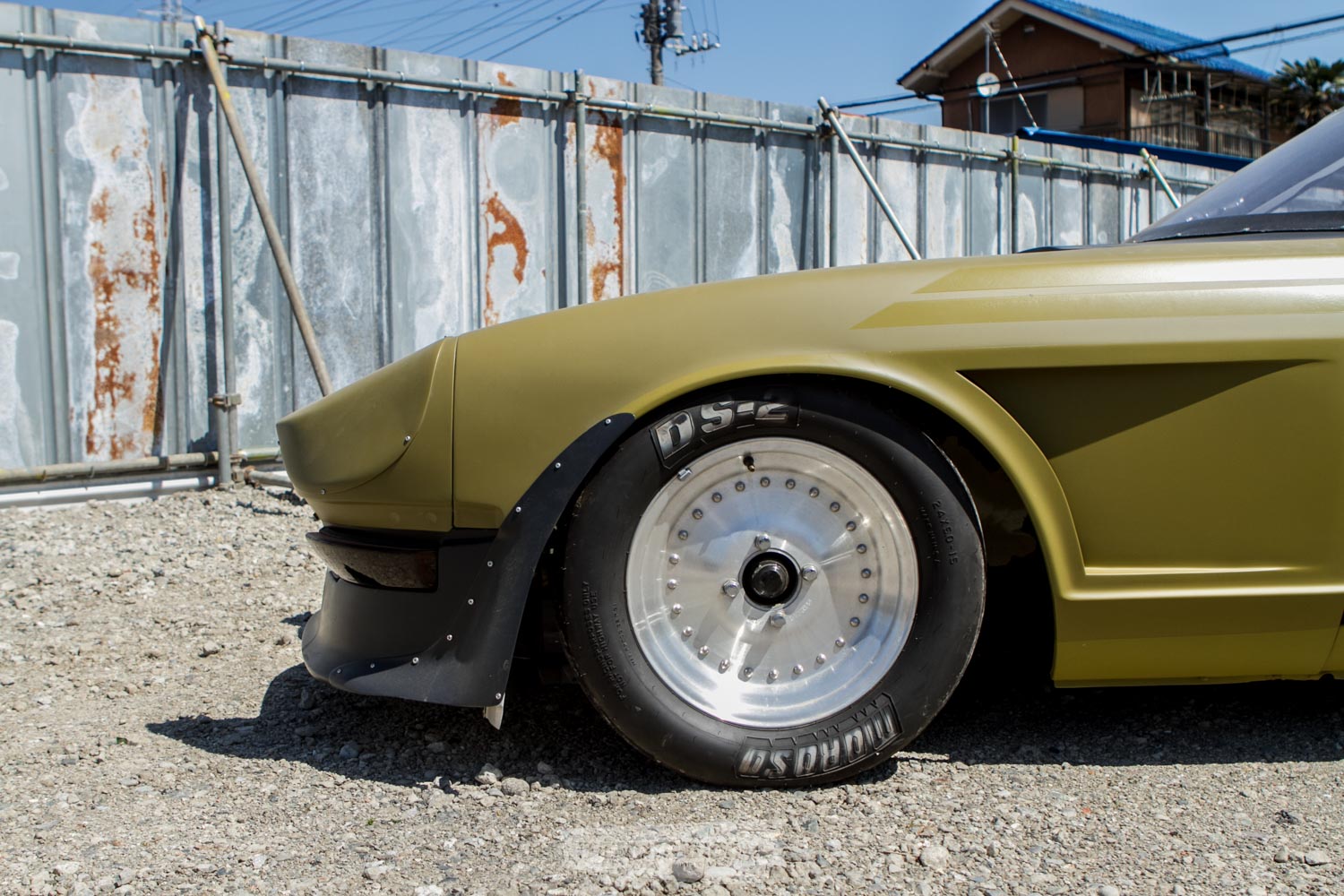
This article originally appeared in NZ Performance Car issue No. 256 — you can get your hands on a copy by clicking the cover below:





